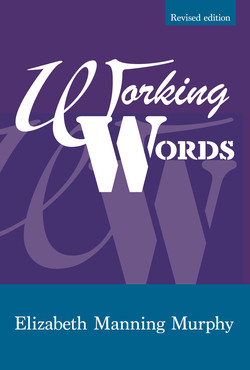Читать книгу Working Words - Elizabeth Manning Murphy - Страница 20
На сайте Литреса книга снята с продажи.
Оглавление9. Disclaimers
35
Should my quote contain a disclaimer? It’s a frequent question. So let me share with you some disclaimers I’ve used in quotes for editing and writing jobs, and, for comparison, some website and email disclaimers I have been involved in preparing. It won’t answer all the questions, but may stimulate discussion and help you to start thinking about writing a disclaimer in your next quote.
Why have a disclaimer at all?
You need to protect yourself, as far as you can, from legal action arising out of the material you work on, and from the possibility that some information may be out of date or inaccurate, through no fault of your own. You need to be clear about where your liability ends and becomes someone else’s responsibility.
For anything more than a very simple disclaimer, it is probably a good idea to get legal advice. However, even a lawyer will tell you that a disclaimer will not protect you from determined legal action – it is only a deterrent.
The following simple disclaimer goes with my quotes for most straightforward, enjoyable editing jobs, where the client is well known to me:
I should emphasise that my editing is my recommendation only.
[The client] is free to accept or reject my recommendations, and I do not assume any liability for what may ensue from [the client’s] acceptance or rejection of my recommendations.
It is by no means legally binding, but is a help in getting my point of view across.
Editing scripts for oral delivery is a different ball game. The person recording the script could misread a word or could put the emphasis in the wrong place. I don’t want to be responsible for what might ensue as a result of an actor’s poor performance. Mind you, my editing is backed by a lot of experience in radio script writing, so I know what will work and what won’t. Here is the disclaimer that has been used several times for that sort of job:
As usual, I have to emphasise that all editing I do is my recommendation only. It is up to you [project manager] and [client] to accept or reject any of my suggested alterations to the text, and I cannot be held responsible for any 36 misunderstandings that may occur as a result of what finally appears in the recording.
A newsletter that I prepare has a section called ‘Diary Dates’. Information for this section is gathered from many sources – personal communication, websites, other newsletters, and so on – and this is the disclaimer:
Diary Dates information comes from a variety of sources. No liability for the accuracy of dates or other content is assumed. For details, please refer to the respective contact organisations or persons.
It is very important that websites carry disclaimers. At the time of writing the article on which this chat is based, the Australian Government Culture and Recreation Portal recommended that:
if your website carries information which may influence the behaviour or activities of others, which makes any claims, or is sensitive in some way, then it may be worth getting legal advice from experts about what exactly you should include in your site’s disclaimer.
Although this portal has closed and has not been replaced, the advice is still valid. It is vital in the case of voluntary organisations that do not have the money for hefty insurance premiums but want to protect themselves as well as they can.
Here is part of the disclaimer that appeared on the website of a voluntary group that was based in Canberra:
We try at all times to present accurate information and to recommend reliable links. At all times we will act in good faith to provide the information sought. However, we depend on information given to us by both the communities seeking the information or advice and the potential providers of the information or advice.
…
… the onus of assessing the accuracy and relevance of the information or advice provided by [the group] must lie with the community seeking assistance from [the group]. It is strongly recommended that if the community is in doubt about the quality of advice or assistance offered, they should seek other advice.
The full disclaimer was the result of lengthy consultation with a lawyer.
37
What sort of message is a disclaimer trying to get across?
A disclaimer:
alerts readers to the fact that, while we do our best to make sure that everything is accurate and up to date, we cannot guarantee that accuracy
warns readers that information is intended for the correct recipient and may contain confidential material
puts the onus on readers to check for viruses and defects in attachments.
Here is an example of the second kind of disclaimer, about confidentiality:
Material in this email is intended for the person or persons to whom it is addressed. It may not be passed on to anyone without permission from [name of organisation]. If you believe you have received this email (including attachment/s if any) in error, please contact the writer and immediately trash the email.
Disclaimers go some way towards protecting both editors (or writers) and their clients. In the sort of work we do, often something very simple like one of the examples above may be sufficient, but if in doubt, seek legal advice.
